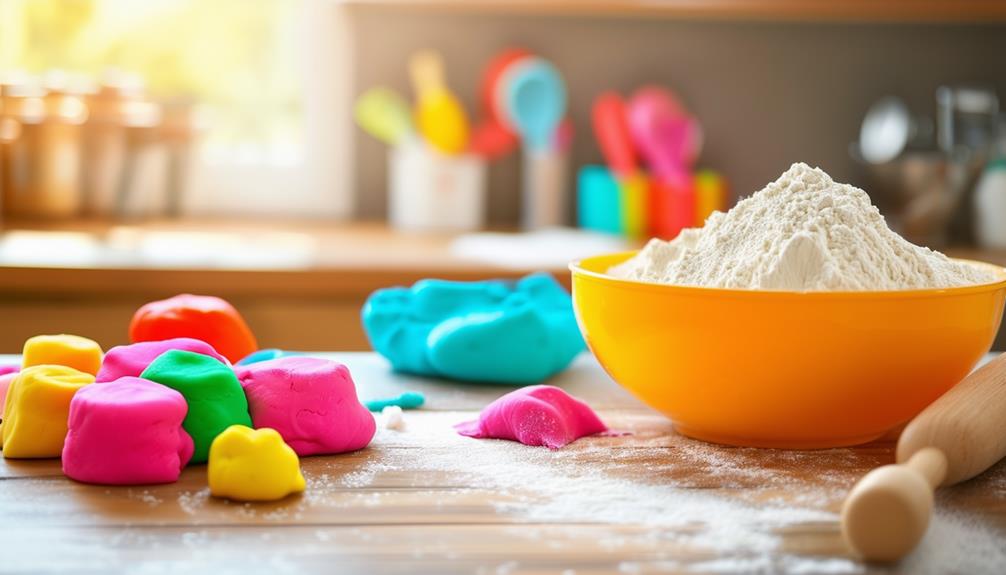What Is Oobleck Made Of?
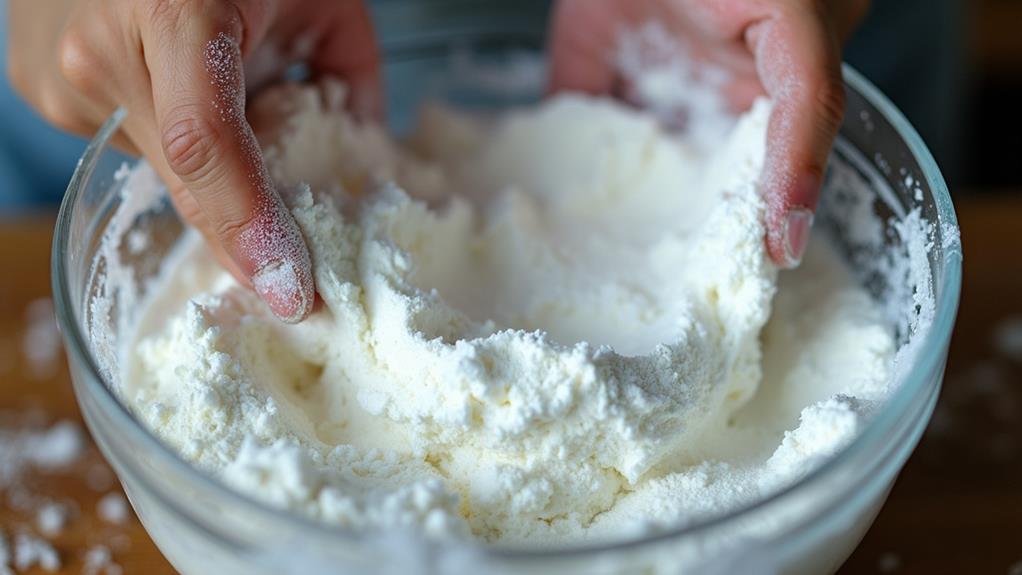
Oobleck is a fascinating substance created from a simple mixture of cornstarch and water in a 2:1 ratio. This non-Newtonian fluid defies the typical behaviors of liquids and solids. The straightforward combination of ingredients might seem unremarkable, but there's more to Oobleck than meets the eye. To fully appreciate its unique properties, it's essential to understand how to mix it, adjust its consistency, and even add color for a more engaging experience.
Ingredients Needed
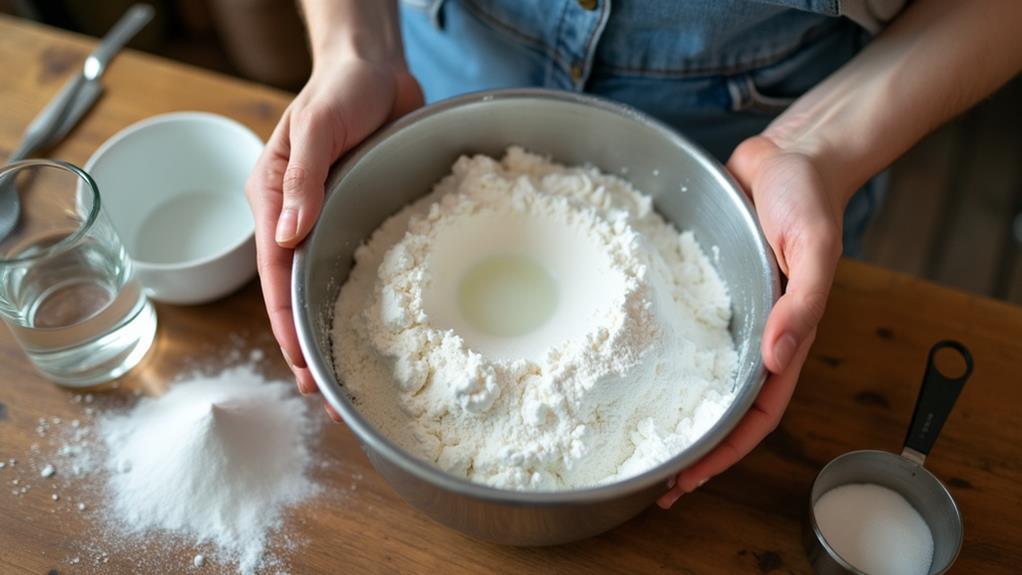
To make Oobleck, you'll need cornstarch and water, which are common kitchen ingredients. For a standard batch, use 1.5 cups of cornstarch and 1 cup of water, maintaining a 2:1 ratio of cornstarch to water. This ratio allows you to adjust the consistency as needed.
For added visual appeal, you can mix in a few drops of food coloring or tempera paint. These optional additives will not alter the texture but will make the Oobleck more engaging.
Mix the cornstarch and water thoroughly until you achieve a honey-like consistency. If the mixture is too runny, add more cornstarch; if it's too thick, add more water. The goal is to achieve a balance where the Oobleck behaves like a solid under pressure but flows like a liquid when at rest.
With these ingredients and steps, you're ready to create your own Oobleck!
Mixing Process
Begin by adding 1.5 cups of cornstarch to a mixing bowl. Gradually incorporate 1 cup of water while stirring with a spoon. Once the mixture starts to thicken, switch to using your hands to better combine the ingredients and assess the texture. Adjust the consistency as needed by adding more cornstarch or water until you achieve a mixture that behaves like a thick liquid, exhibiting both solid and fluid properties.
Gradual Ingredient Incorporation
Begin by gradually incorporating 1.5 cups of cornstarch into a mixing bowl. This is the primary ingredient for creating Oobleck. Slowly add 1 cup of water to the cornstarch, stirring continuously to prevent clumps from forming. Initially, use a spoon for mixing to ensure all the cornstarch is moistened and starting to combine with the water.
As the mixture begins to thicken, switch to using your hands. This tactile method helps you control the texture better, allowing you to feel when the mixture reaches the right consistency. Keep mixing until the Oobleck exhibits its unique properties—it should tear easily under quick pressure but flow smoothly when handled gently.
- Gradual incorporation: Adding water slowly prevents clumps and ensures even mixing.
- Hands-on mixing: Using your hands allows for better texture control and a more thorough mix.
- Consistency signs: The mixture should be smooth, resembling honey, and exhibit non-Newtonian behavior.
Consistency Adjustments
Once you've mixed your initial Oobleck, it's time to fine-tune its consistency. Begin with the basic ratio of 1.5 cups of cornstarch to 1 cup of water. Gradually mix the cornstarch into the water, stirring continuously to avoid clumps. Aim for a smooth texture, similar to honey.
If the Oobleck is too thick and difficult to manipulate, add small amounts of water gradually, mixing thoroughly after each addition. Conversely, if the mixture is too watery and lacks the unique solid-liquid properties, incrementally add more cornstarch.
The ideal Oobleck should tear when stirred quickly but flow smoothly when handled gently. Test it by using your fingers; it should feel solid under pressure but melt back together when you release it. Don't hesitate to make minor adjustments until the consistency is just right. The goal is for it to behave like a non-Newtonian fluid, exhibiting both solid and liquid characteristics, making it an intriguing and enjoyable substance to play with.
Mixing Techniques
After achieving the desired consistency adjustments, it's essential to focus on proper mixing techniques to ensure a smooth and evenly blended Oobleck. Start by pouring 1 cup of water into a mixing bowl and gradually adding 1.5 cups of cornstarch. Using a spoon, mix the ingredients until they begin to combine. As the mixture thickens, switch to using your hands for thorough incorporation. This hands-on approach allows you to feel the texture and make necessary adjustments.
To achieve the ideal honey-like consistency:
- Gradually add cornstarch or water: This method allows you to fine-tune the mixture, aiming for a balance where it feels both solid and liquid.
- Incorporate food coloring: For a visually appealing Oobleck, add a few drops of food coloring after reaching the desired consistency. Mix thoroughly to distribute the color evenly.
- Experiment with textures: Feel free to squeeze, jab, or manipulate the Oobleck to observe its unique non-Newtonian properties. This helps you understand how different ratios affect its behavior.
Effective mixing techniques are crucial for creating a consistently smooth Oobleck that showcases its fascinating properties. Enjoy the process and explore different textures to find your perfect mix!
Ideal Consistency
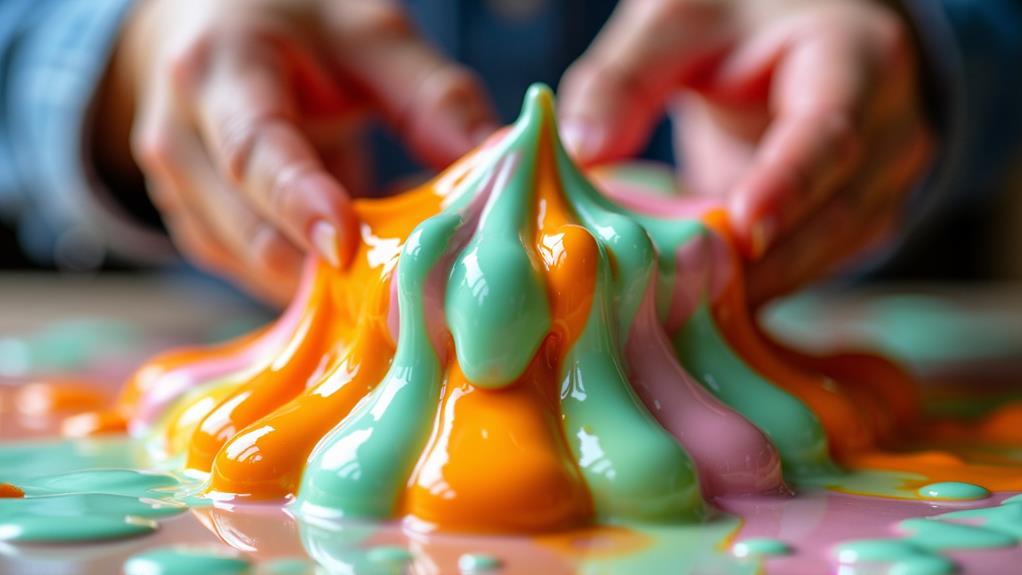
Achieving the ideal consistency for Oobleck is key to maximizing its fun and unique properties. As a non-Newtonian fluid, Oobleck behaves differently depending on the force applied to it. To get started, you'll need a standard ratio of 2 parts cornstarch to 1 part water, which typically means using 1.5 cups of cornstarch and 1 cup of water.
The ideal consistency should feel thick and fluid, somewhat like honey. When you move it gently, it should flow smoothly. But when you apply force, it should act like a solid, resisting your touch. You can test this by scraping your finger through the mixture; it should tear easily and then melt back together when you release it.
Finding this perfect balance sometimes requires slight adjustments. Add small increments of either cornstarch or water if needed to get that honey-like texture. Once you reach the desired consistency, you can incorporate food coloring to make the Oobleck more visually appealing without altering its unique properties.
Adjustments and Tips
Adjusting your Oobleck's consistency can be both fun and rewarding. Begin with the standard recipe: 1.5 cups of cornstarch to 1 cup of water. If the mixture is too liquid, gradually add more cornstarch to thicken it to a honey-like texture. Conversely, if the mixture is too thick, add water in small increments and mix thoroughly until you achieve the desired consistency.
Here are a few tips to guide you:
- Too Liquid? Add cornstarch slowly while mixing to thicken it.
- Too Thick? Introduce small amounts of water to loosen the mixture.
- For Visual Appeal: Add a few drops of food coloring to the water before mixing it with the cornstarch.
Experimenting with your Oobleck can provide hours of fun as you fine-tune the recipe to your preference. This simple yet fascinating process allows you to explore the unique behaviors of this non-Newtonian fluid, ensuring it is just right for your activities.
Adding Color
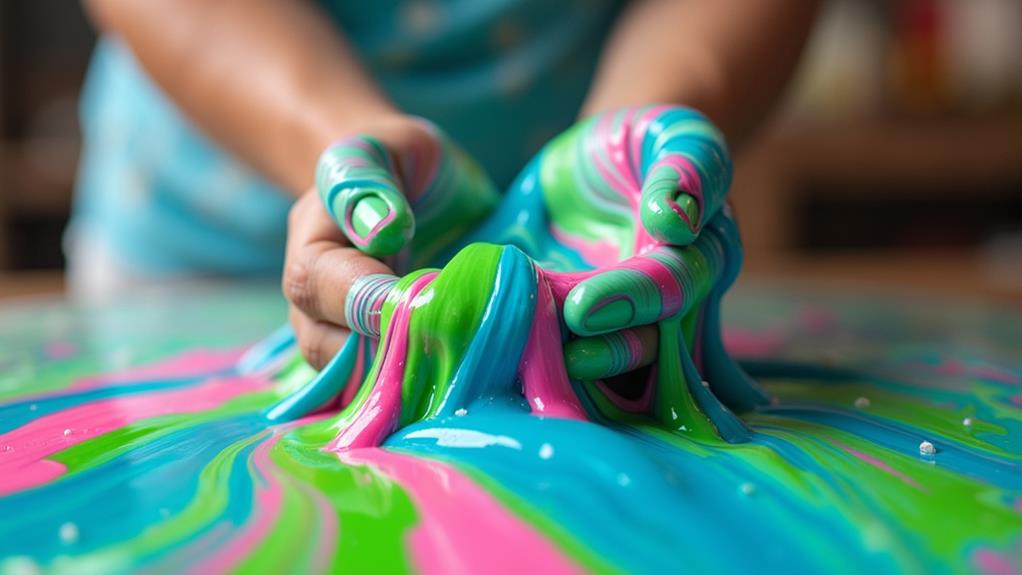
To enhance your Oobleck's visual appeal, add food coloring after achieving the desired consistency. For more uniform color, mix a few drops of food coloring into the water before combining it with cornstarch. Ensure thorough mixing to guarantee even distribution and avoid streaks.
Choosing Food Coloring
Adding color to your Oobleck can enhance its visual appeal, making playtime more enjoyable. Choosing the right food coloring is essential for the best results. Start by selecting washable food coloring to ensure easy cleanup and prevent staining surfaces. Add a few drops directly into the water before mixing it with cornstarch for a uniform color.
Here are some tips for choosing the right food coloring:
- Washable Food Coloring: Choose washable types to avoid staining hands and surfaces.
- Color Variety: Select colors based on your preference to create unique and lively Oobleck.
- Blendability: Opt for food coloring that mixes easily for better color distribution.
The choice of color is entirely up to you, offering endless creative possibilities. Whether you prefer a single color or a mix of several, food coloring allows you to customize your Oobleck to match any theme or mood. Adding food coloring not only enhances aesthetics but also makes the experience more engaging. Pick your favorite colors and transform your Oobleck into a colorful masterpiece!
Mixing for Even Color
To achieve an evenly colored Oobleck, begin by adding a few drops of food coloring to the water before mixing it with cornstarch. This step ensures the color is uniformly distributed from the start.
Once your mixture reaches the desired consistency, thoroughly blend the food coloring using a spoon or your hands until the color is even and no streaks remain. For custom shades, you can combine different food coloring. Ensure the color is well-distributed throughout the Oobleck.
Oobleck's Unique Properties
Oobleck's unique properties make it a captivating subject for exploration. Mixing cornstarch and water in a 2:1 ratio creates a substance that defies typical fluid behavior. This non-Newtonian fluid exhibits shear-thickening behavior, acting like a solid under force but flowing like a liquid when handled gently.
You can observe these properties:
- Shear-thickening: When you punch or squeeze Oobleck, it behaves like a solid, but when you let it sit or move it slowly, it flows through your fingers.
- Tactile Sensation: The starch particles suspended in water create a unique tactile experience, shifting between solid and liquid states.
- Shape Manipulation: You can mold Oobleck into different shapes, demonstrating principles of fluid dynamics and material science.
Understanding Oobleck's behavior starts with its composition. Combining cornstarch and water balances the interaction between starch particles and liquid, allowing Oobleck to shift between states. This duality makes it an excellent tool for hands-on learning and experimentation. Whether demonstrating its properties in a classroom or having fun at home, Oobleck's intriguing characteristics offer endless possibilities for exploration.
Scientific Explanation
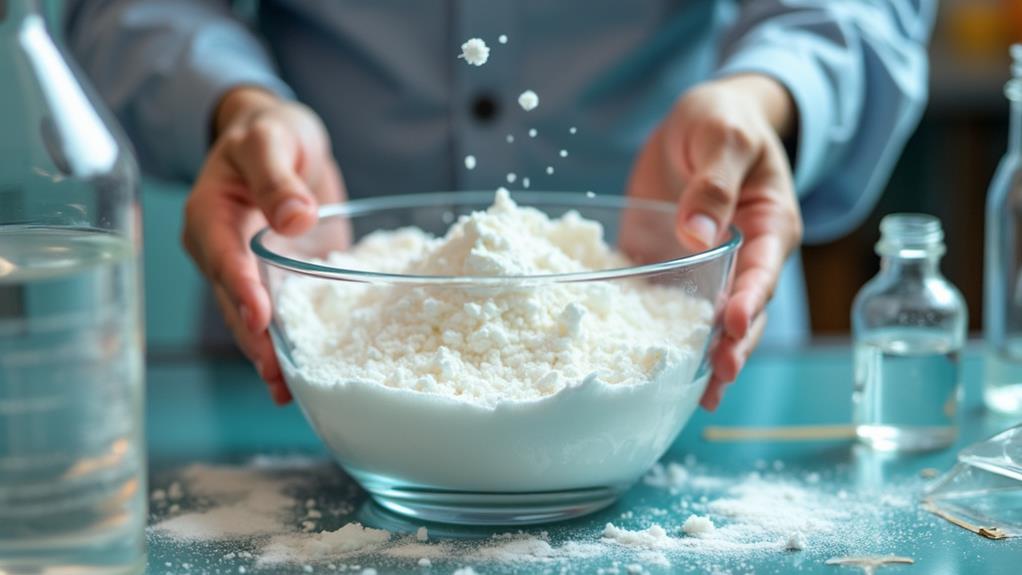
When exploring the scientific explanation behind Oobleck, its behavior can seem both fascinating and perplexing. At its core, Oobleck is a simple mixture of cornstarch and water, typically using a 2:1 ratio. The magic occurs when the starch granules suspend in water, allowing the mixture to flow like a liquid under low stress but behave as a solid when force is applied.
The key to Oobleck's unique properties lies in its classification as a shear-thickening fluid. This means that its viscosity, or resistance to flow, increases when pressure is applied. When you press or squeeze Oobleck, the water between the cornstarch particles is forced out, increasing the friction and causing the mixture to solidify. Conversely, when left undisturbed, the particles slide past each other easily, making the mixture act like a liquid.
Adding optional components like food coloring won't change Oobleck's fundamental behavior but can make it more visually striking. Understanding these scientific principles helps explain why Oobleck is such an intriguing substance, offering a hands-on example of how non-Newtonian fluids work in everyday materials.
Fun Experiments
Exploring Oobleck through engaging experiments provides a hands-on way to understand its unique properties. One of the most fascinating aspects of Oobleck is its behavior under different forces. For instance, squeeze it in your hands, and it feels solid; release it, and it flows like a liquid. This duality makes Oobleck ideal for a variety of fun and educational experiments.
Try these activities to investigate Oobleck's intriguing nature:
- Shape a solid ball: Mold Oobleck into a solid ball with your hands. When you stop applying pressure, observe how it turns back into a liquid and flows away.
- Density challenge: Fill a large container with Oobleck and attempt to walk or run on it. Moving quickly allows you to stay on top, but standing still will cause you to sink.
- Sound experiments: Place Oobleck on a subwoofer and play low-frequency sounds. Watch how it reacts to vibrations, creating mesmerizing patterns.
Mixing Oobleck with different textures like sand or glitter can enhance its sensory appeal, offering more opportunities for creative and educational exploration. Dive in and discover the endless possibilities!
Safety Precautions

When making Oobleck, always supervise young children to prevent ingestion, even though it is non-toxic. Use an easily cleaned area to contain the mess, and dispose of it in the trash to avoid plumbing issues. Store any leftovers in an airtight container, but do not keep it for more than 24 hours.
Supervision During Play
Ensuring children's safety during Oobleck play is essential, making constant supervision a must. Vigilantly monitor them to prevent ingestion of the non-edible substance and to watch for choking hazards from any small objects. Setting clear boundaries on where Oobleck can be played helps minimize mess and ensures the play area remains safe.
By being attentive to children's hands and clothing, you can avoid creating a slippery environment that may lead to falls or spills. To manage the mess and guarantee a safe play zone, create a designated cleanup area using plastic tablecloths or newspapers. This containment strategy simplifies cleanup and maintains safety.
Key points to keep in mind:
- Monitor for ingestion: Ensure children don't eat or put Oobleck in their mouths.
- Set play boundaries: Designate a specific area for Oobleck play to contain messes.
- Encourage hygiene: Teach kids to wash their hands after playing to prevent accidental ingestion.
Constant supervision not only keeps your little ones safe but also allows them to enjoy the fun, sensory experience of Oobleck play without any mishaps.
Non-Toxic Ingredients
While making Oobleck, you'll find that its ingredients—cornstarch and water—are non-toxic and safe for children to handle, making it an excellent choice for educational activities at home or in the classroom. Cornstarch and water are commonly found in most households, adding to the convenience and safety of creating this intriguing substance.
Despite the non-toxic nature of these ingredients, it's crucial to supervise young children during play to prevent accidental ingestion. If you want to add some visual appeal to your Oobleck, consider incorporating non-toxic food coloring to maintain safety.
Cleanup is straightforward since Oobleck can be easily disposed of in the trash. Avoid washing it down the sink to prevent plumbing issues. By following these simple guidelines, you can enjoy a fun and educational experience with Oobleck, assured of its safety for everyone involved.
Proper Disposal Methods
To properly dispose of Oobleck, always throw it in the trash instead of washing it down the sink to prevent clogging your pipes. Oobleck's unique texture can cause plumbing issues if not disposed of correctly. Follow these steps for proper disposal to ensure a smooth cleanup:
- Dry out: Allow the Oobleck to dry and solidify into a powder, which you can then sweep up and throw away easily.
- Scoop up: Use a spoon or spatula to collect excess material before cleaning the area.
- Use warm cloths: For any remaining residue, use warm, damp cloths to break down and remove Oobleck from surfaces effectively.
Additionally, always supervise children during play to ensure they do not ingest Oobleck, as it is not edible. Proper disposal methods keep your plumbing safe and ensure a hassle-free cleanup, making your Oobleck experience both fun and responsible.
Cleanup Tips
Preparing to clean up after your Oobleck fun can make the process much easier. Start by covering your play area with a plastic tablecloth or newspaper to prevent a big mess.
If Oobleck spills, don't worry. Let it dry completely. Once dried, Oobleck turns back into powder, making it easy to sweep or vacuum up, which helps avoid spreading the mess. For surfaces, use warm, damp cloths to wipe down any remaining residue. The warmth helps break down the cornstarch, making it easier to clean.
Have leftover Oobleck? Store it in an airtight container for up to 24 hours. This minimizes waste and keeps the mess contained for future use. When you're ready to discard it, throw it in the trash. Never pour Oobleck down the sink, as it can clog your plumbing.




